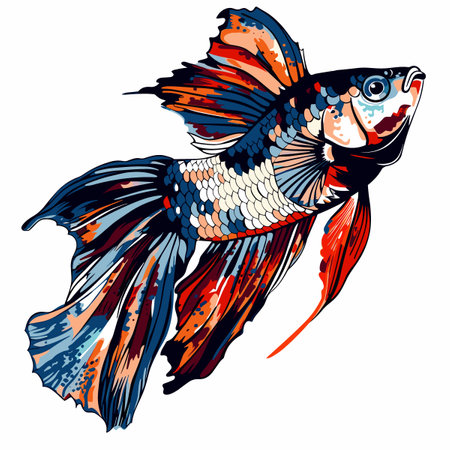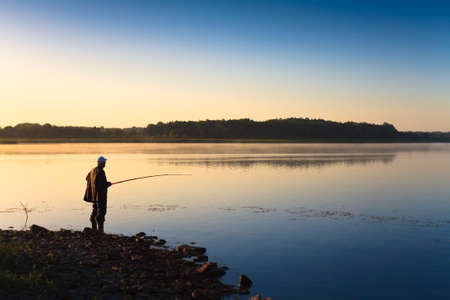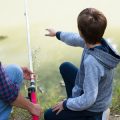Introduction to Seasonal Shore Fishing in the UK
Shore fishing in the UK is a pursuit that blends tradition, local knowledge, and a deep connection with the rhythm of the changing seasons. From the rugged cliffs of Cornwall to the sweeping beaches of Northumberland, each stretch of coastline offers its own distinct challenges and rewards throughout the year. The British Isles are renowned for their unpredictable weather patterns, shifting tides, and diverse marine habitats, all of which play a pivotal role in shaping the angling experience. As the seasons turn, so too do the opportunities for targeting different species, employing unique tactics, and making the most of local conditions. Understanding how factors such as water temperature, wind direction, and daylight hours impact fish behaviour is crucial for any serious shore angler looking to maximise their success. Whether you’re a seasoned veteran or a newcomer to the sport, appreciating these seasonal nuances not only enhances your catch rate but also deepens your connection to some of the UK’s most beautiful natural environments.
2. Spring: Kickstarting the Fishing Year
As winter recedes and the waters begin to warm, spring marks a pivotal period for shore anglers across the UK. The new season sees a fresh influx of species close to the coastline, making it an ideal time to dust off your rods and embrace the longer days. Understanding which species are in play, where to target them, and what tactics to employ is key for maximising success during this vibrant part of the angling calendar.
Spring Species Analysis
Three mainstays dominate the UK shore scene in spring: plaice, bass, and codling. Each species has unique habits influenced by seasonal changes:
| Species | Typical Locations | Peak Months | Bait & Tactics |
|---|---|---|---|
| Plaice | Muddy and sandy beaches, estuaries (South Coast, Kent, Merseyside) | March – May | Worm baits (ragworm/lugworm) fished on flowing traces; light tackle for subtle bites |
| Bass | Shallow surf beaches, estuary mouths (Sussex, Cornwall, Welsh coast) | April – June | Peeler crab or sandeel; spinning with lures at dawn/dusk; mobile approach pays dividends |
| Codling | North East beaches, Bristol Channel, Thames Estuary | March – early May | Lugworm/squid cocktails on pennel rigs; fish after rough weather for best results |
Top UK Spring Shore Fishing Locations
- Chesil Beach (Dorset): Renowned for early plaice runs and occasional spring bass.
- Mersey Estuary: Holds excellent numbers of codling well into April.
- Bristol Channel: Offers both codling and flounder as well as schoolie bass from late spring onwards.
- Kent Beaches (Dungeness, Hythe): Productive for both flatfish and bass as tides increase in strength.
- Cornwall’s Surf Beaches: Early bass action improves rapidly after Easter.
Tactical Tips for Spring Success
- Bait Freshness: Use freshly dug lugworm or ragworm—spring fish are often selective after winter scarcity.
- Tide Timing: Target flooding tides and first two hours of ebb for peak feeding activity, especially with improving water clarity.
- Lighter Tackle: Downsizing rigs increases sensitivity—vital when chasing shy-biting plaice in clearer water.
- Lure Choice: For early bass, small surface lures or soft plastics can out-fish traditional bait on calm evenings.
Cultural Note: UK Spring Fishing Traditions
The “first plaice trip” is a rite of passage for many British anglers each March, often celebrated with a fry-up on the beach. As sea temperatures rise, local angling clubs frequently hold friendly competitions targeting the season’s first bass—an event that stirs excitement along much of the English and Welsh coastline.

3. Summer: Abundance and Activity
As summer arrives across the UK, shore fishing transforms into a season of excitement, with bustling activity both above and below the waterline. Warmer sea temperatures trigger extensive migrations, drawing in shoals of mackerel, lively pollack, and hard-fighting smooth hound to accessible coastal marks. For many anglers, this is the time when opportunity peaks, offering thrilling sport and impressive variety.
Migratory Visitors: Mackerel, Pollack, and Smooth Hound
During the summer months, mackerel arrive in vast numbers along much of the UK coastline. These fast-moving fish provide exhilarating sport on light tackle, making them a favourite for both casual anglers and dedicated lure enthusiasts. Pollack follow suit, lurking around rocky outcrops and kelp beds—especially prolific in the South West—offering powerful runs and testing angling skill. Meanwhile, smooth hound patrol sandy stretches from Kent round to North Wales, rewarding those who present fresh peeler crab baits with spirited battles on balanced gear.
Prime Summer Marks
Certain locations become hotspots during summer’s abundance. The piers that jut into the Bristol Channel are renowned for their ability to concentrate migratory species; these urban marks offer easy access and reliable catches for those who arrive early or stay late. Further west, Cornwall’s rugged headlands and rocky platforms come alive as shoals of mackerel push baitfish close to shore, with pollack lurking beneath. Timing your sessions around dusk or dawn can make all the difference in these highly-pressured areas.
Technical Strategies for Busy Waters
Summer’s popularity means busy venues and increased competition among anglers. To maximise your chances, finesse is key: scale down your end tackle for wary mackerel and opt for longer leaders when targeting pollack near structure. For smooth hound, a running ledger rig loaded with fresh crab will often out-fish more traditional set-ups. Don’t underestimate local knowledge—chat with regulars about tidal patterns and bait preferences unique to each mark. Adapting your technique to match the conditions not only increases your catch rate but ensures you make the most of summer’s vibrant shore fishing scene across the UK.
4. Autumn: Opportunities for Specimen Fish
As the days grow shorter and temperatures begin to drop, autumn ushers in a prime window for UK shore anglers targeting specimen fish. This season is particularly renowned for the appearance of larger bass and cod, both of which migrate closer to the coastline as they follow baitfish driven inshore by cooling waters. The North East and Welsh coasts come into their own during this period, offering some of the most productive marks for those in search of a personal best.
Top Autumn Marks: Where to Fish
| Region | Notable Locations | Main Target Species |
|---|---|---|
| North East England | Roker Pier, Seaham Beach, Whitby Rock Marks | Bass, Cod, Whiting |
| Welsh Coast | Aberystwyth Promenade, Anglesey Rock Ledges, Llandudno Pier | Bass, Cod, Plaice |
| South West England | Chesil Beach, Bude Breakwater, Porthleven Rocks | Bass, Pollack, Conger Eel |
Adapting Your Strategy for Autumn Success
The unpredictable autumn weather demands a flexible approach. Tidal patterns become more pronounced with frequent Atlantic swells and stronger winds stirring up nutrients and enticing larger predators inshore. Keen anglers adjust their tactics by:
- Tide Timing: Fishing two hours either side of high tide often proves most effective as fish move in to feed on dislodged crustaceans and baitfish.
- Bait Selection: Fresh peeler crab and lugworm are highly effective for cod and bass, while squid strips can help single out larger specimens.
- Rig Adjustments: Employing pulley rigs or clipped-down paternosters helps present bigger baits securely in rougher surf conditions common in autumn.
Weather Watch: Making Conditions Work for You
Autumn’s changeable climate can be both a challenge and an asset. Onshore winds after a storm often lead to improved catches as murky water encourages predatory fish closer to the shoreline. However, safety must always take priority—check local forecasts and avoid exposed marks during severe weather spells.
Tactics Recap: Maximising Your Autumn Session
- Target known hot spots along the North East and Welsh coasts for specimen-sized fish.
- Be prepared to switch tactics as conditions shift—carry a range of rigs and baits.
- Pace your sessions around favourable tides and post-storm periods for best results.
Autumn truly offers one of the most exciting opportunities for shore anglers across the UK. With thoughtful planning and tactical adaptation to seasonal changes, it’s possible to land that trophy bass or cod before winter sets in.
5. Winter: Hardcore Angling and Big Rewards
As the mercury drops and many fair-weather anglers retreat indoors, seasoned UK shore fishers know that winter is the time for serious sport and the chance of landing trophy-sized cod, plump whiting, and chunky flounder. The harsher climate brings new challenges, but also unique opportunities for those willing to brave the elements.
Prime Species and Their Habits
Cod are undoubtedly the stars of winter shore fishing in Britain. They move inshore to feed voraciously during stormy spells, particularly after rough seas have stirred up food along the seabed. Whiting arrive in numbers too, providing excellent sport on lighter tackle, while flounder migrate into estuaries and sheltered bays in search of food-rich mudflats.
Where to Fish: Rugged Beaches and Sheltered Hotspots
The East Coast comes alive from November through February, with legendary beaches like Aldeburgh, Spurn Point, and the Holderness coast regularly producing specimen cod. For those seeking protection from biting winds and heavy surf, the Solent’s numerous marks—from Lee-on-the-Solent to Hill Head—offer calmer waters teeming with whiting and flounder, especially on a flooding tide.
Gear Up for Success
Tackling winter means adapting your gear: opt for robust beachcasters paired with large fixed spool or multiplier reels loaded with 20-30lb mainline. Pulley rigs with clipped-down baits help cast bulky lugworm or squid baits into deeper water where cod lurk. Don’t skimp on clothing—thermal base layers, waterproofs, insulated boots, and a windproof hat are essential. A sturdy tripod keeps your rods stable in gusty conditions, while a headlamp is crucial for those long, dark sessions common during UK winters.
While winter shore fishing demands grit and preparation, it rewards commitment with memorable catches and true bragging rights—making it a season not to be missed by any serious UK angler.
6. General Tips for Year-Round Success
While understanding the best seasons and hotspots is crucial for successful shore fishing in the UK, there are several key strategies that will serve anglers well throughout the year, no matter the weather or target species. These tactics not only improve your catch rate but also ensure a responsible and enjoyable angling experience along Britain’s diverse coastline.
Mastering Weather and Tides
One skill that separates seasoned anglers from novices is the ability to read the weather and tidal patterns. In the UK, weather conditions can shift rapidly—so keep a close eye on local forecasts and tide tables before planning your session. Fish activity often peaks during rising tides, particularly around dawn and dusk. Learning how wind direction influences surf and bait movement can also give you a significant edge, as certain winds push food closer to shore, attracting predatory fish.
Tackle Maintenance: All-Season Reliability
The salt-laden air of British shores is notorious for corroding tackle and gear. Regularly rinse rods, reels, and terminal tackle with fresh water after each outing. Check lines for abrasion and change them frequently, especially if you’re targeting hard-fighting species or fishing over rough ground. Sharp hooks are essential; carry a file or spare hooks to avoid missed opportunities when that trophy bass or cod strikes.
Respecting Coastal Access and Conservation Codes
British coastal access rights are generous, but they come with responsibilities. Always follow local signage regarding permitted fishing areas, seasonal restrictions, and protected zones. Practise catch-and-release where appropriate, handle fish with wet hands to minimise stress, and use barbless hooks when targeting vulnerable species. Dispose of litter responsibly—discarded line or bait packaging is both unsightly and harmful to wildlife.
Adaptability Across Seasons
Flexibility is key to year-round success. Be prepared to switch up baits, rigs, and locations as conditions change. During colder months, scale down your tackle for finicky winter species like whiting or flounder; in summer, upgrade your gear for powerful smooth-hounds or hard-hitting rays. Keep an open mind—some of the UK’s best shore fishing happens off the beaten track or at unexpected times.
Embrace Local Knowledge
No matter how experienced you become, local advice remains invaluable. Chat with fellow anglers at your chosen mark or visit nearby tackle shops for up-to-date reports on what’s biting where. Respect established etiquette—give others space on crowded piers or beaches—and remember that the camaraderie of British shore angling is as rewarding as any personal best catch.
By combining these timeless tactics with targeted seasonal strategies, you’ll maximise both your enjoyment and effectiveness on the UK’s ever-changing shoreline—whatever the month or weather throws your way.


